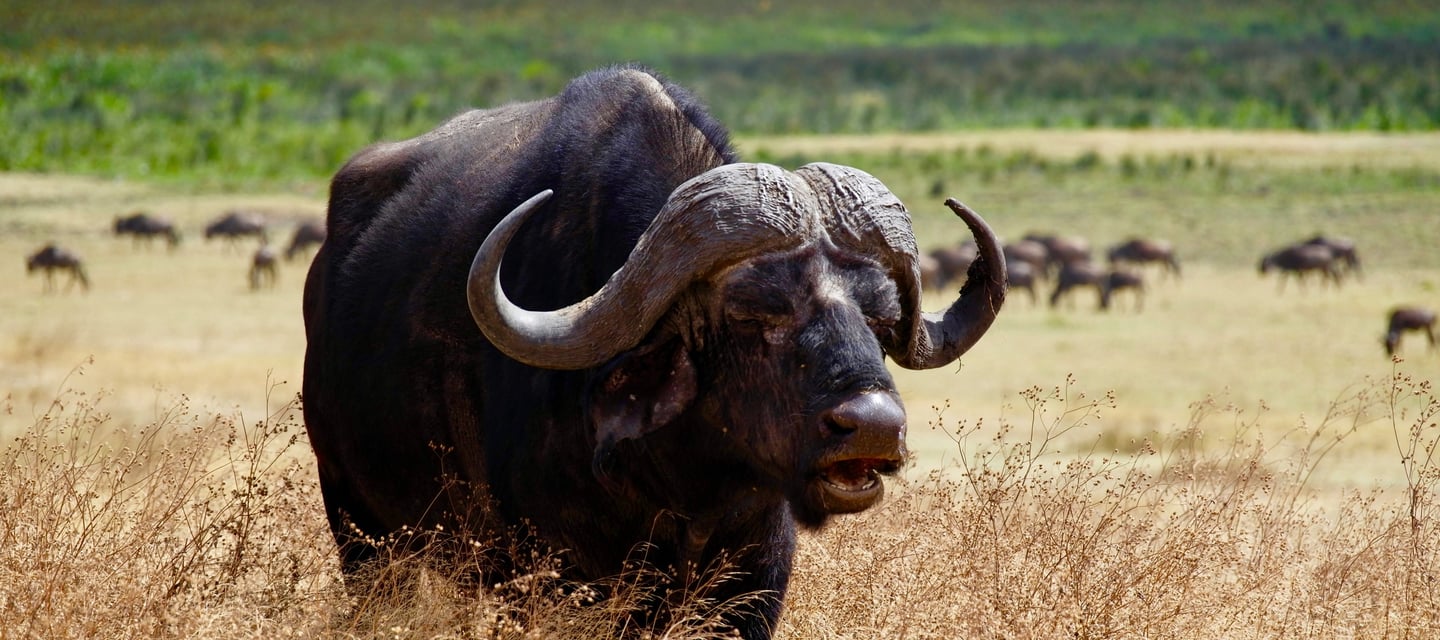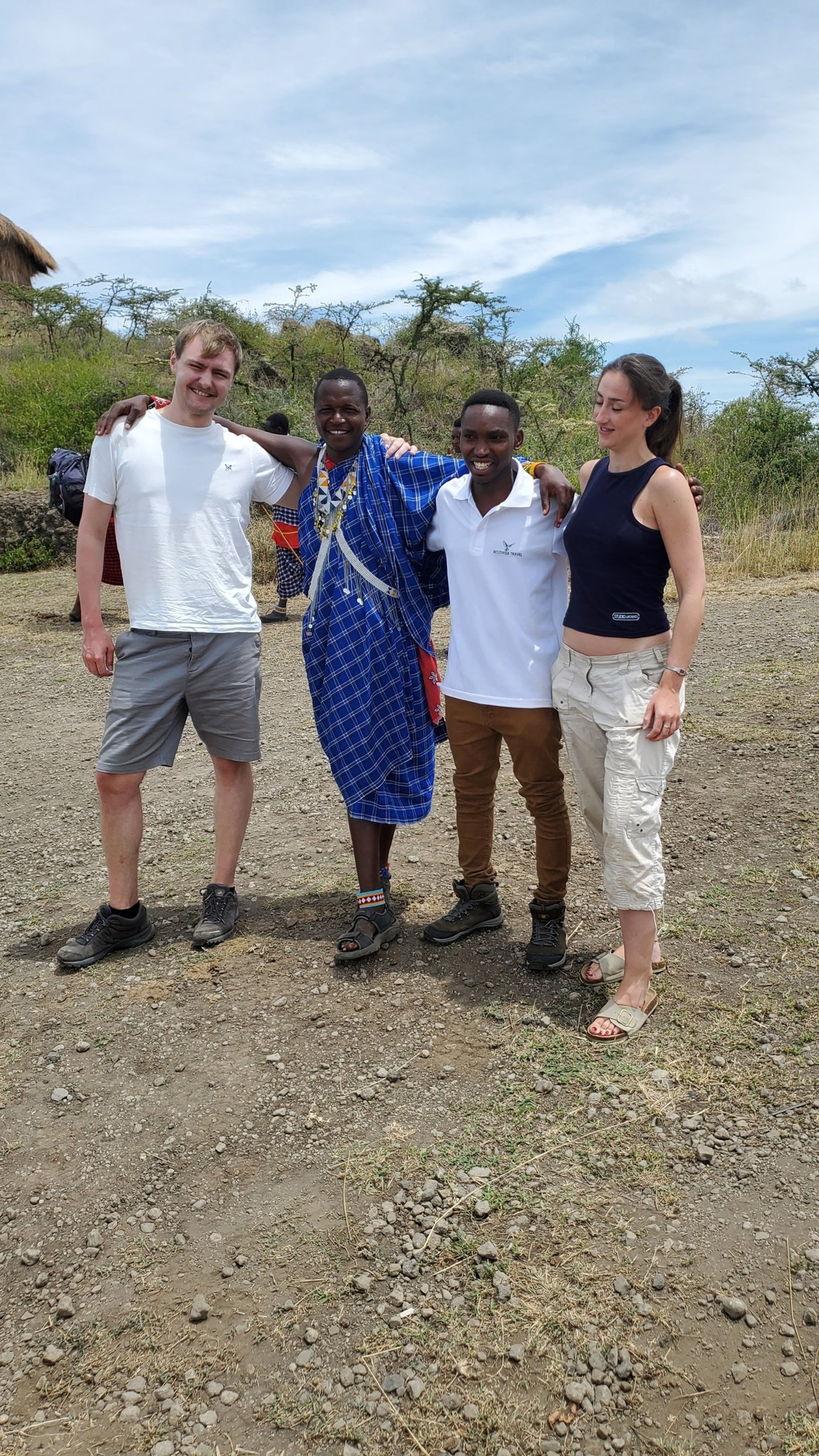Ngorongoro
The crater’s stunning landscapes, from vast grasslands to shimmering lakes, are a paradise for nature lovers and photographers. Beyond its beauty, Ngorongoro has a rich history. Traces of early human life have been found at Olduvai Gorge, one of the most important archaeological sites in the world.
Ngorongoro Conservation Area is not just a safari destination—it’s a living masterpiece of nature and history. Covering over 8,000 square kilometers, this protected area is home to diverse ecosystems, from dense forests and open savannas to volcanic craters and alkaline lakes.
At the heart of Ngorongoro lies the world-famous Ngorongoro Crater, the largest intact volcanic caldera on Earth. This natural enclosure supports an extraordinary concentration of wildlife, making it one of the best places in Africa to see predators in action. Here, you can witness majestic lions roaming freely, endangered black rhinos grazing peacefully, and massive elephant bulls with some of the longest tusks in Africa.
Ngorongoro is also a cultural treasure. The Maasai people, known for their vibrant traditions and deep connection to nature, have coexisted with wildlife in this region for centuries. Visiting a Maasai village offers a unique opportunity to learn about their way of life, traditional dances, and colorful beadwork.
For history lovers, Olduvai Gorge, located within the conservation area, is one of the world’s most significant archaeological sites. Often called the “Cradle of Mankind,” it is where some of the oldest human fossils and tools were discovered, providing vital clues about our early ancestors.
Whether you’re an adventurer, a wildlife enthusiast, or a history seeker, Ngorongoro National Park offers an experience like no other. Discover its magic with Restivida Travel and create memories that will last a lifetime!
A Deeper Look into Ngorongoro National Park
A Natural Wonder Like No Other
Ngorongoro Crater, often called “Africa’s Garden of Eden,” is a breathtaking sight formed over two million years ago by the collapse of a massive volcano. Today, this 600-meter-deep caldera spans over 260 square kilometers and shelters one of the densest populations of wildlife in Africa. Unlike other parks where animals migrate, Ngorongoro’s enclosed ecosystem allows for year-round game viewing, offering incredible chances to spot the Big Five and countless other species in their natural habitat.
Birdwatcher’s Paradise
Ngorongoro is not just about big animals—it’s also a haven for bird lovers. Over 500 bird species can be found here, including flamingos that gather in thousands along the shores of Lake Magadi, crowned cranes dancing gracefully in the grasslands, and the mighty Verreaux’s eagle soaring above the cliffs. Whether you’re an expert birder or just enjoy the beauty of colorful birds, Ngorongoro’s avian diversity will leave you in awe.
The Lerai Forest – A Hidden Gem
Nestled within the crater is the Lerai Forest, a magical acacia woodland where massive bull elephants roam. These giants, known for their impressive tusks, use the forest for shelter and food. The Lerai Forest is also a great spot to see leopards lounging on tree branches and elusive bushbucks moving through the shadows.
The Enchanting Seasonal Changes
Ngorongoro transforms with the seasons, making every visit unique. During the green season (November to May), the landscape is lush, rivers flow abundantly, and wildebeest give birth, attracting predators in thrilling chases. The dry season (June to October) brings shorter grass, making it easier to spot wildlife, and herds gather around waterholes, creating dramatic wildlife interactions.
A Journey Through Time at Empakaai Crater
Beyond Ngorongoro Crater lies the lesser-known Empakaai Crater, a hidden gem offering stunning views and a remote adventure. A trek down into the crater leads you to a deep blue soda lake, often surrounded by pink flamingos. The hike offers breathtaking vistas of Mount Kilimanjaro and the Great Rift Valley, making it a paradise for photographers and nature lovers seeking a quieter, untouched escape.
The Unique Species of Ngorongoro
While Ngorongoro is famous for its Big Five, it is also home to a range of rare and lesser-known species. The Serval, a small, graceful cat with large ears, hunts along the crater’s edges, while the Caracal, a medium-sized wild cat, can be spotted among the shrubs. The black-backed jackal and the hyena, which are often seen scavenging, add to the area’s diverse predators.
Experiences Under the Stars – Night Safaris
For those seeking a unique adventure, a night safari offers the opportunity to witness the more elusive nocturnal creatures of Ngorongoro. From the soft glow of a lion’s eyes to the stealthy movement of leopards, these safaris give a rare glimpse into the behaviors of nighttime predators like owls, bush babies, and the highly elusive caracal.
Travel Tips for Visiting Ngorongoro
What to Pack: Comfortable, lightweight clothing, sturdy shoes for safaris, and a light jacket for cooler mornings and evenings. Don’t forget sunscreen and a hat!
Best Time to Visit: The dry season (June to October) offers the best game viewing, while the green season (November to May) provides lush landscapes and migratory birds.
Photography Tips: Ngorongoro is a photographer’s dream! For the best shots, pack a zoom lens for close-ups of wildlife and a wide-angle lens to capture the dramatic landscapes.
Book your adventure today and let Restivida Travel take you on the journey of a lifetime!



